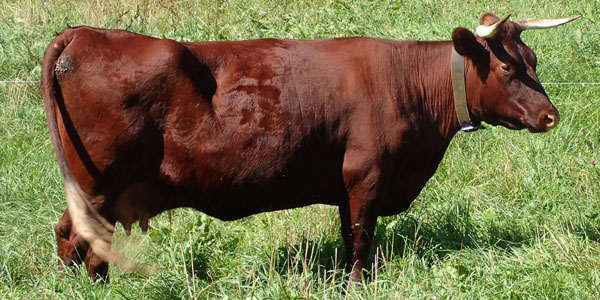
Farm to School Programs Take Root

Farm to School Programs Take Root
The Farm to School movement is taking root all across the US. From simple beginnings with just a dozen or so programs in the early 90’s, there are now farm to school programs in almost 10,000 schools in 48 states – with new efforts sprouting up each month. These programs take different forms in different places. Some focus on sourcing local farm food for the school cafeteria, some on nutrition, garden and food education, and others on building strong community connections between local farmers and producers and the school community. However, all aim to re-connect school kids with healthy local food to improve their diets, strengthen their understanding of where their food comes from, and support local agriculture.
Vermont has been a Farm to School pioneer, with a long history of engagement and partnership by farmers, school leaders, non-profit organizations, state agencies and local businesses. Farm to School in Vermont often advances a comprehensive agenda, working to integrate local food and farms into the cafeteria, classroom and community – or the “three C’s.” Around Vermont, various regional groups have emerged to work together around these goals and support the more than 200 schools (out of 320 in the state) with farm to school efforts.
Following is a series of three articles that describe Farm to School efforts from different vantage points. All three authors live in Hartland, Vermont.
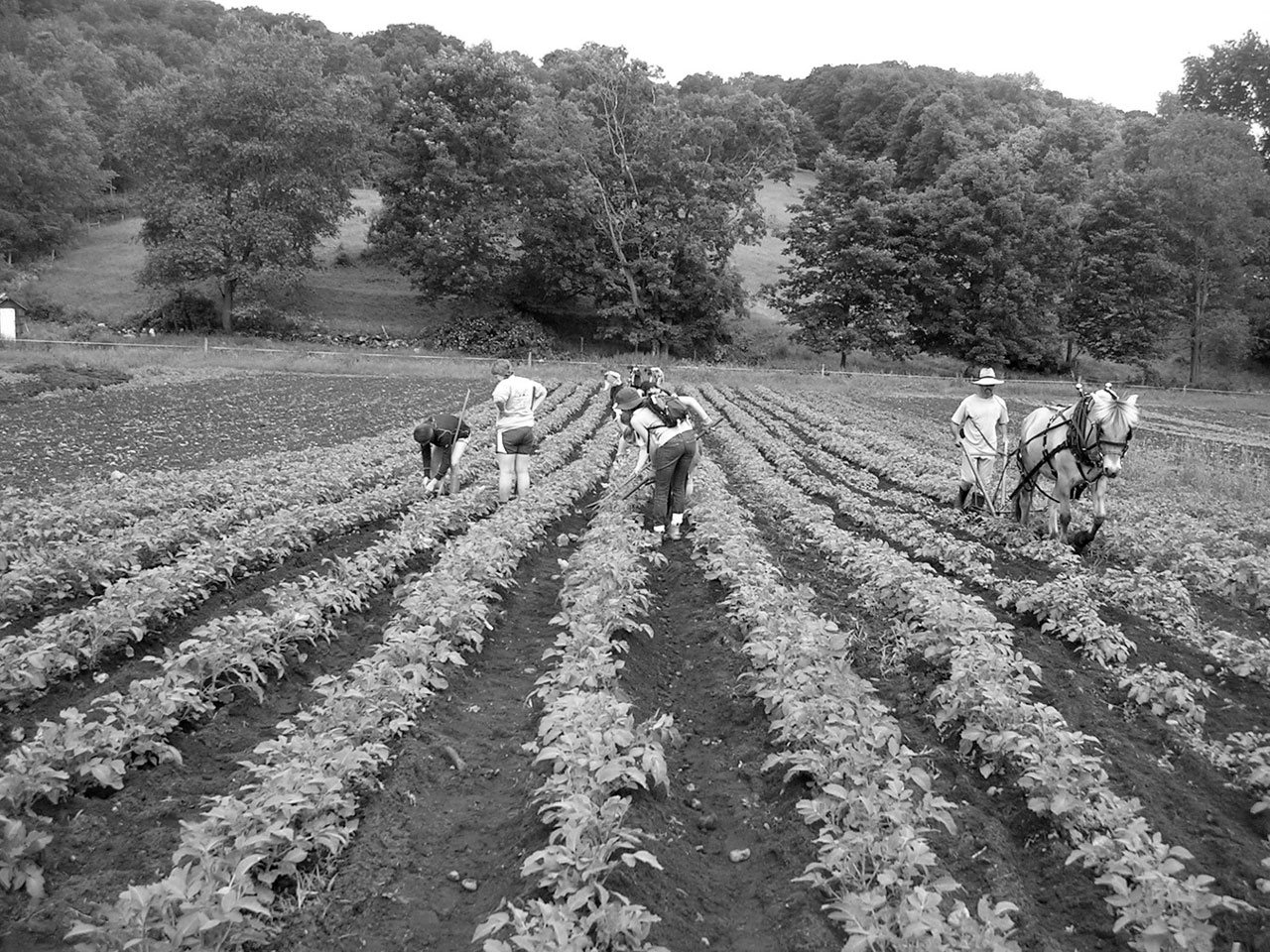
Partnering Kids With Horses
by Stephen Leslie – Horse-powered market gardener and dairy farmer from Hartland, Vermont
At Cedar Mountain Farm we have been hosting school groups for more than a decade. In recent years many of these visits have been under the auspices of the Farm to School Program. As a farm that utilizes work horses we have the opportunity to bring a unique aspect to these visits. Over the years we have come up with a list of practical tasks suitable for third grade students. Several of the projects we have developed are centered on the theme of partnering the kids with our work horses. We feel that the students will have a meaningful and memorable experience on the farm if they are engaged in getting a real job done and especially so when horses are involved. We have created a few scenarios in which the kids and the work horses each carry a piece of the same task.
We begin by introducing the children to the horses and letting them have an opportunity to help groom them and pick out their feet. We then answer questions and discuss the reasons we have work horses on our farm to do jobs that are normally done these days with a tractor. Often these discussions touch on such issues as the growing scarcity of oil and the environmental costs of relying on fossil fuel powered farm machinery. We present our use of horses in positive terms as an enjoyable alternative to farming with tractors, but I am often surprised at how remarkably conscious even the third graders already are of the challenges we face to live more sustainably on the planet.
In the fall the children help us to harvest and box up the winter squash. We talk beforehand about how long the squash will need to keep and the importance of handling it gently (no tossing) and carefully sorting it into the wax boxes according to kind. The teachers and volunteer parents and the farmers all handle the nippers and the children shuttle the fruits. They seem to delight in the hide and seek game of finding the squash amid all the foliage and they are amazed at the quantity of boxed fruits we have at the end of the morning’s session. Estimating the number of pieces and weight for each and all the boxes makes for some fine honing of math skills in the field.
On the next visit we have the kids help to broadcast winter rye over the now empty squash field. Each child receives a 2 gallon pail full of seed. A farm worker shows them how to throw out the seed in a wide swath. They start in a line at one end and work their way down the field. Next the kids return their buckets to the barn and gather round to watch the work horses getting harnessed and hitched to the disc harrows. Everyone then proceeds back to the field, where the children stand with the adults in a designated area and watch as the horses pull the disc to cover the seed that they have sown. Often, many of the students will have taken riding lessons, and some even have saddle horses at home, most of the kids will have been to a fair or farm that offers wagon rides. But for the majority of these kids this will be the first time they will have seen horses doing real work on a farm. When the students return for a farm visit in the spring we show them the verdant stand of rye that they helped to grow with the work horses.
As spring time rolls around we get the children involved in planting the market garden. When it is a question of having a school bus full of eight year olds helping to plant—a seed potato proves to be just about the right size. For the past several years the two third grade classes from our local elementary school have helped us to plant potatoes. Keeping the kids focused and engaged is always the challenge and a big part of that is giving them a job that is fun. It is also important that the task be something they can reasonably handle and see through to completion.
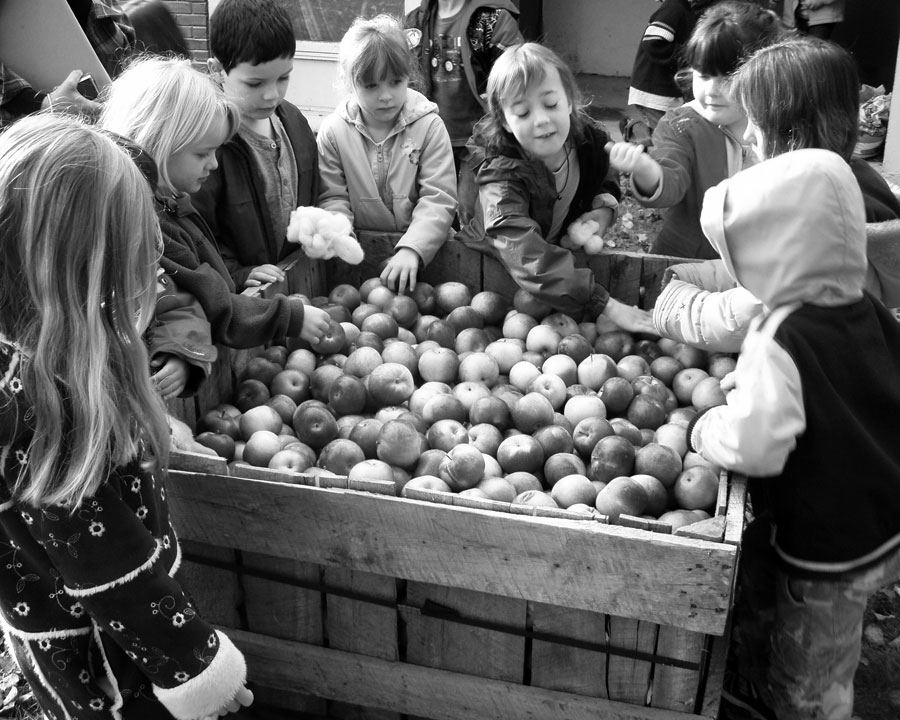
Before the school bus arrives we already have the rows marked out; 18 rows at 200’ with 32” spacing between the rows. As the kids watch from a safe distance, we hitch our trusty old mare to an antique single horse plow with a 10” bottom and we open up the furrows. Once we have the first several furrows established we set the kids up with planting. Each child is given a 1’ measure stick and a 2 gallon pail full of seed potatoes. Then all are instructed on how to set the seed in a straight line in the bottom of the furrow so that the stick fits in between each spud. An adult stands ready at the end of the rows with the sacks of seed potatoes ready to give the kids refills as needed. Other adults work alongside the children. Once all the seed potatoes are set out, the kids, the farmers, the teachers, and the attendant parents, all pitch in with rakes and hoes to make sure all the seed gets covered with soil.
Once the potatoes are up a good six to eight inches the kids come back to help with the first hilling. We start out by hitching up the mare to a single-horse cultivator to loosen up the soil in the rows. As soon as we have a few rows worked up, the kids come in with the hoes and begin to draw the dirt in towards the bases of the plants. This is a big job. A few of these children are farm kids and no strangers to hard work, but most others of them may never have been asked to do a tough physical job before in their young lives. By pulling together in partnership; the kids and the horses, the teachers, parents and farmers, we all get the task done.
The following school year these same kids will return to the farm as fourth graders to help harvest some of the potatoes that they planted with their own hands. They are accompanied in this task by the classes of new third graders who are just beginning their own Farm to School experience. Some of the potatoes that the children harvest will be served in the school cafeteria. And so a cycle is completed and we hope that these seeds which have been planted will last a lifetime.
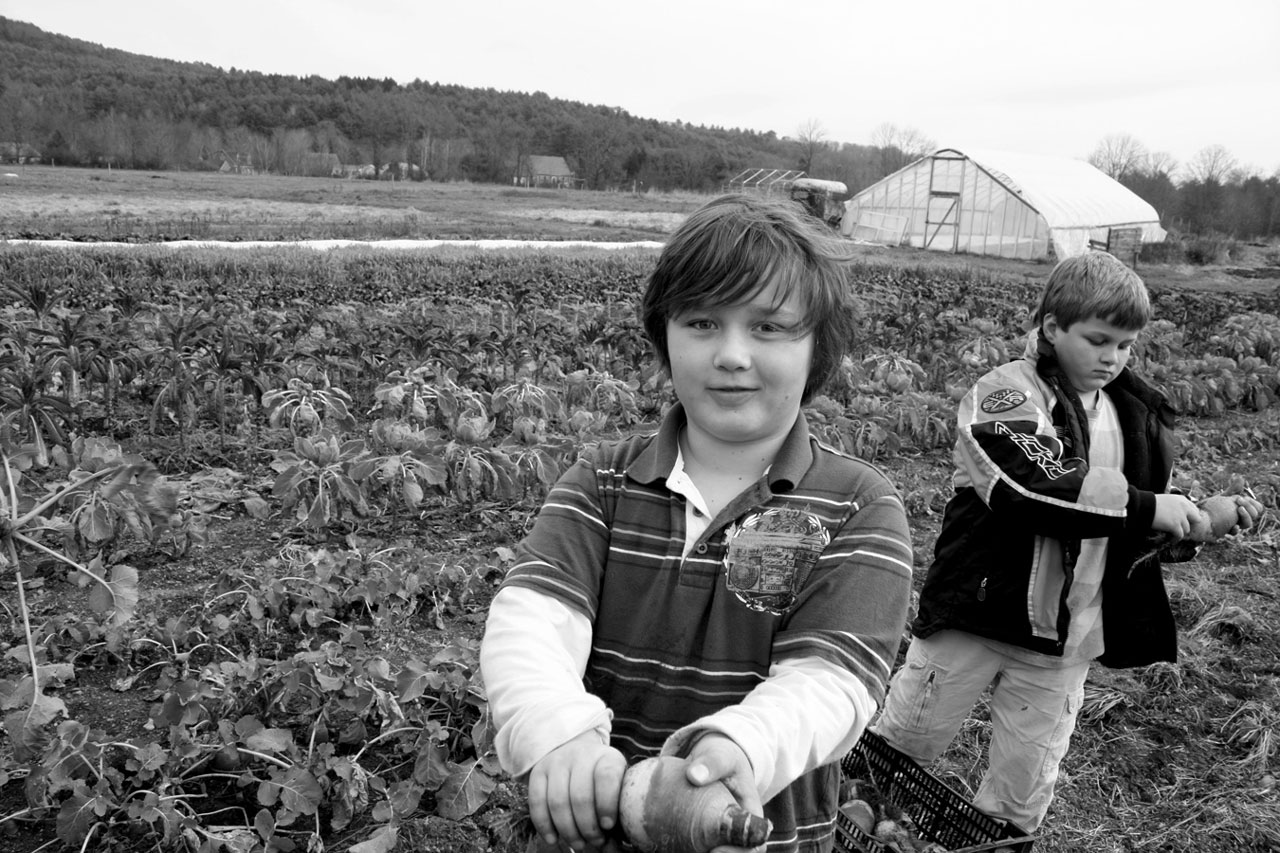
Building Bridges with Farm to School
by Amy Richardson; dairy farmer, mother, agricultural education consultant and advocate from Hartland, VT.
My kids began their lives on our farm. From babyhood my sons have been alongside my husband and me throughout each farm year. Much of their early schooling has happened here. We witness birth, death, and growing up between. We work on the land as different seasons allow for various agricultural pursuits. My husband and I have farmed together for nearly twenty years, on his family place of more than a century. As we raise our family here, we continue to see the multitude of opportunities a farm can provide as an educational resource.
The farm to school movement has been growing in popularity and momentum here in my home state of Vermont, for more than a decade. My involvement began in my county also over ten years ago, after our eldest son began attending elementary school. At that time it became apparent to me that there were only a few minor connections between the local school and local farming sector. I joined NOFA (Northeast Organic Farming Association) VT as a farm to school and community consultant in my county. Presently there are nine such individuals working across the fourteen counties of Vermont. The farm to school resources, interests, and possibilities vary among the regions of the state. Some of our programs are offered statewide, while others grow out of specific requests and desires of certain people and communities.
Today, Vermont is in the midst (perhaps even in the forefront) of a growing movement to reinvigorate farm to school connections in the northeast. This renaissance is taking numerous forms. Many schools across the Green Mountain State are purchasing locally grown, seasonal foods to serve in cafeterias. Furthermore, some schools and community groups are growing, harvesting, processing, and serving food from gardens on school grounds, nearby farms, or community maintained plots. A number of VT schools have built and use greenhouses as classrooms. Many also have composting programs that have been proven as successful tools for education, and production of useable soil, for years.
In my own county where agriculture was once one of the most common livelihoods, the dwindling number of farmers are very often eager to develop a relationship with students, and community groups. Many farmers that I work with have been willing to host student visits to their farms, or come to a school to share their own knowledge and stories through structured Farm Day celebrations. Farmers in my region have been instrumental in supporting taste tests of seasonal foods in schools, hands on farm related activities, as well as composting, greenhouse, and sugarhouse projects.
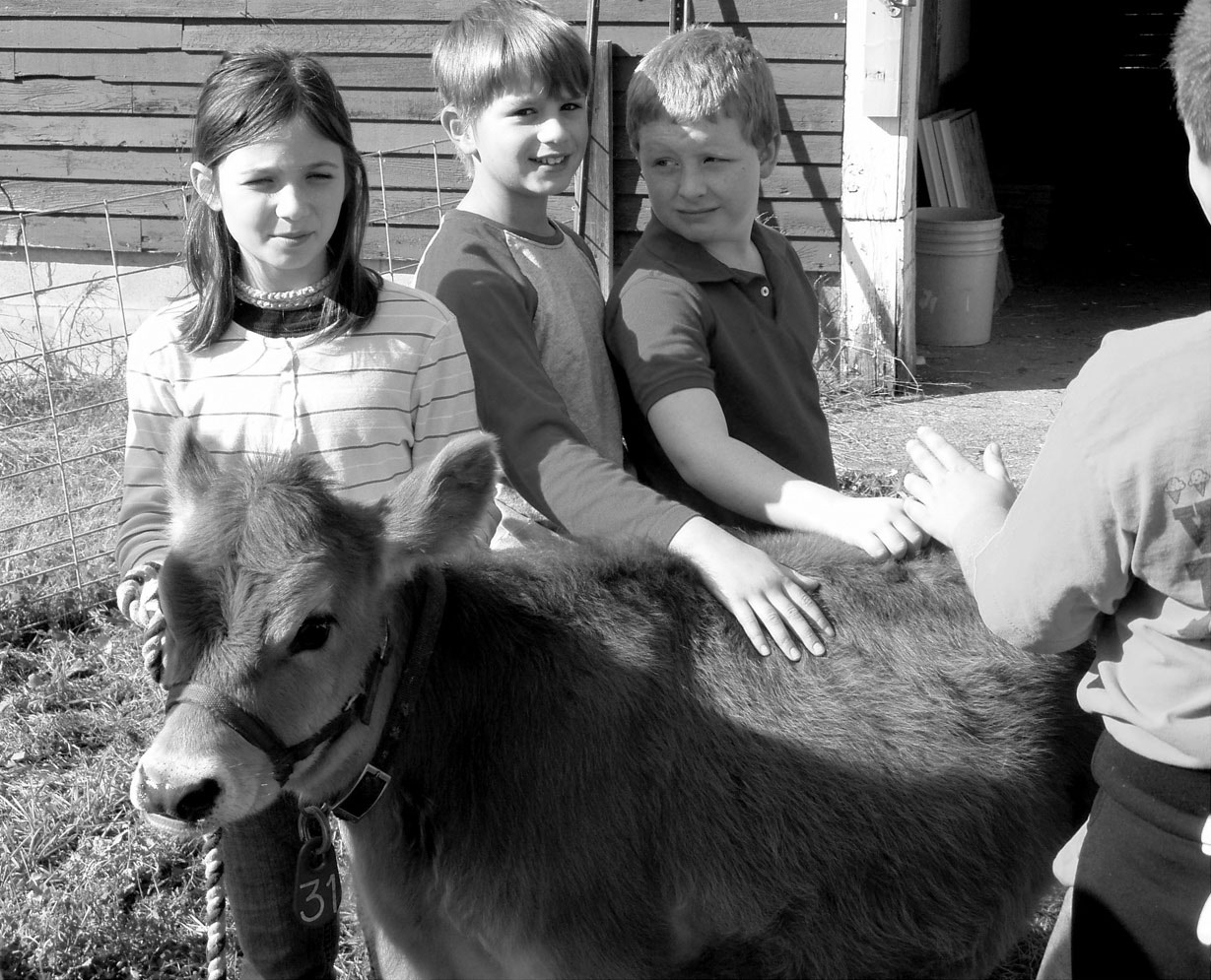
One specific program that NOFA VT has instituted statewide over the last five years, is a pen pal arrangement between farmers and classrooms. The farmers writes actual letters every other month throughout an entire school year. The program only requires the farmer write/type on paper and send via postal service. Otherwise the content, length, and any enclosures are of the farmers choice. The classroom is required to write back once – as a group, or individually. The feedback has been overwhelmingly positive from both sides. Farmers are appreciative of a forum to share their expertise, and personal style. Students are eager to ask questions, offer ideas, and appreciate the intimate connection to a real farmer. In recent years NOFA VT has used grant funding to support field trips to the farms participating as pen pals, so students can meet the farmer who has been writing to them. The last school year involved several dozen farmers and several hundred students across most of Vermont.
Another enriching program found here in Windsor county has been a farm to school partnership between Hartland third and fourth graders and Cedar Mountain Farm. This relationship is somewhat unique, and is a great example of the variety of ways that farmers and schools show interest in working together. Two years ago when my youngest son was in third grade, the class visited this local farm every month of the school year. In the fall students harvested root crops, and planted cover crops. They washed the veggies then brought them back for the cafeteria to use. During the winter the kids focused on animal care, by assisting with cow, horse, chicken, sheep, and pig chores. Come spring the class was back out in the fields watching the horses plow, then planting alongside the farmers. At the beginning of fourth grade my son’s class was able to show the new third grade what was planted, how to harvest, and help with livestock for the school year to come. My son was thrilled with the whole experience. As a farm kid, he had a rare chance to show his familiarity with all the goings on around a farm. This gave him great pride and made his parents laugh to hear his enthusiastic stories of completing similar chores to those on our farm, but somehow better on a different farm! This arrangement between farm and specific grades has been successful because of teacher interest and input, connection to curriculum structure, and accessibility and interest of the farmers.
There must be some truth to the notion that time flies when you are having fun. Whether farming or raising a family, my time is spent doing work, and interacting with people that I find inspiring, enriching, fulfilling, and fun. The farm to school ideas feel natural to me. In some ways it is like getting back to basics, while taking steps toward simplicity and sustainability. Children are the ideal ambassadors of progress. Our state is small but determined. Data now shows that roughly 2/3 of Vermont schools have some sort of farm to school program in place. Young people can get excited about eating local, seasonal food; meeting and interacting with farmers; and visiting farms to see a vibrant, wholesome career choice. Farming is a way to share lessons about life-cycles and family, seasons and land use, with students of all ages who will likely remember these for a long time to come.
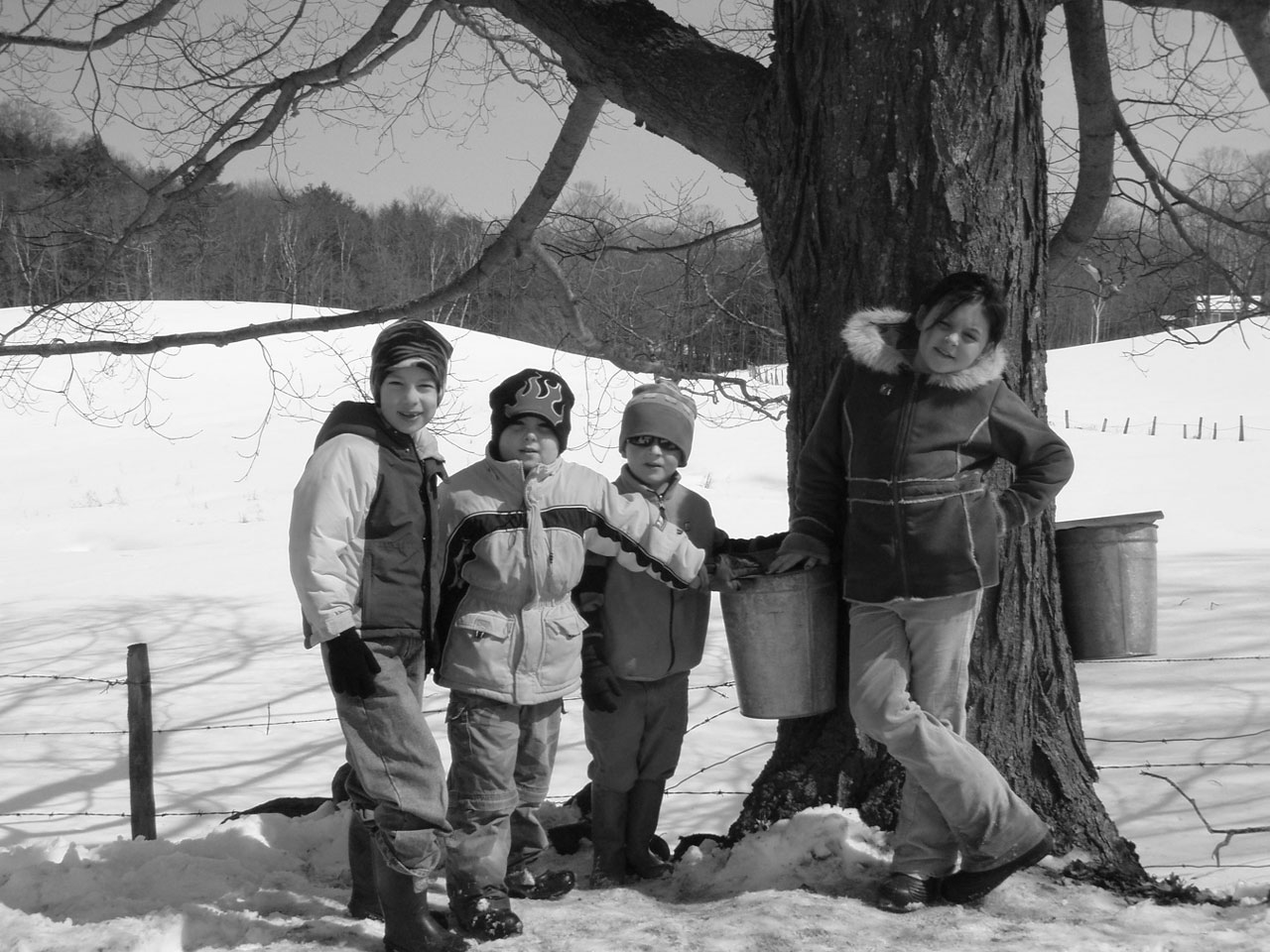
Growing a Farm to School Network
by Peter Allison, Director of the Upper Valley Farm to School Network (www.uvfts.org)
Unlike Amy and Stephen, my farm to school (FTS) roots are not that deep. I am not a farmer and I didn’t grow up on farms. Nor am I a teacher or a food service professional, which are other common points of entry into this field.
My start with FTS began in 2007 when the Hartland Elementary School received one of the first FTS grants from the Vermont Agency of Agriculture. I had moved to the state a couple years earlier with my wife and two sons, and was working as an independent environmental consultant. Someone forwarded me a notice for a part-time position to coordinate the new farm to school program at our local school. I applied for the position thinking it would be a good way to create a connection with my kid’s school, and learn more about farms. I got the position, really enjoyed the work and saw lots of potential for how it can help kids and farms, and I’ve been hooked on FTS ever since.
I should note that since moving to Vermont I do now live on a farm, or collection of farming enterprises, at Cobb Hill co-housing (www.cobbhill.org). Cobb Hill is home to Cedar Mountain Farm (the dairy and vegetable market garden run by Stephen and his wife Kerry, with help from their four-year old daughter), and other operations that make cheese, raise sheep, pigs and chickens, keep bees and make maple syrup. I participate in some of these operations as a volunteer or “partner”, but I cannot claim to be a farmer. I don’t depend on the farm for my income and there are (thankfully for them) no animals that depend on me for their care and survival.
My charge as FTS coordinator was to identify monthly agricultural themes, and build a program that involved farm visits, displays in the school foyer, classroom activities, taste tests and cafeteria offerings related to those themes. Some of the themes were maple syrup, early greens, dairy products, root vegetables, grains, berries, fall harvest and so on.
We visited local farms, cheese makers and sugar houses, tasted raw carrots, celeriac and beets (with and without ranch dressing!), made our own granola, installed gardens and a small hand-me-down hoop house, grew some crops at the new community garden in town, made bicycle-powered smoothies with local yogurt and berries, and made lots and lots of salsa. (See www. hartlandfarm2school.org for the story of the World Famous HES Salsa!)
During that first year of working with teachers, farmers and our food service staff I realized that there were a lot of great opportunities to connect local food with our school, and also a lot of interest on the part of all participants. But there were also a lot of challenges. It can be difficult for farmers to take time out of their long day to host a group of kids, questions about liability insurance in case a student got hurt, and a challenge to arrange transportation. Teachers are under tremendous demands to make sure they fulfill all their curricular requirements and get kids ready for “the tests” – given our national obsession with not leaving kids behind! And, food and farm education doesn’t always seem relevant to the three R’s at first glance. Food service staff often have tight budgets, over-worked staff, inadequate equipment to process local food (rather than the pre-packed stuff that can be opened and warmed), limited storage space and sometimes are not familiar using odd-size funny looking seasonal produce – with dirt on it. Oh, and the staff in charge of keeping the school yard neat are quick to point out that schools are not in session when school gardens need the most care (water and weeding), an ironic vestige of the days when kids were needed on the farm during the summer.
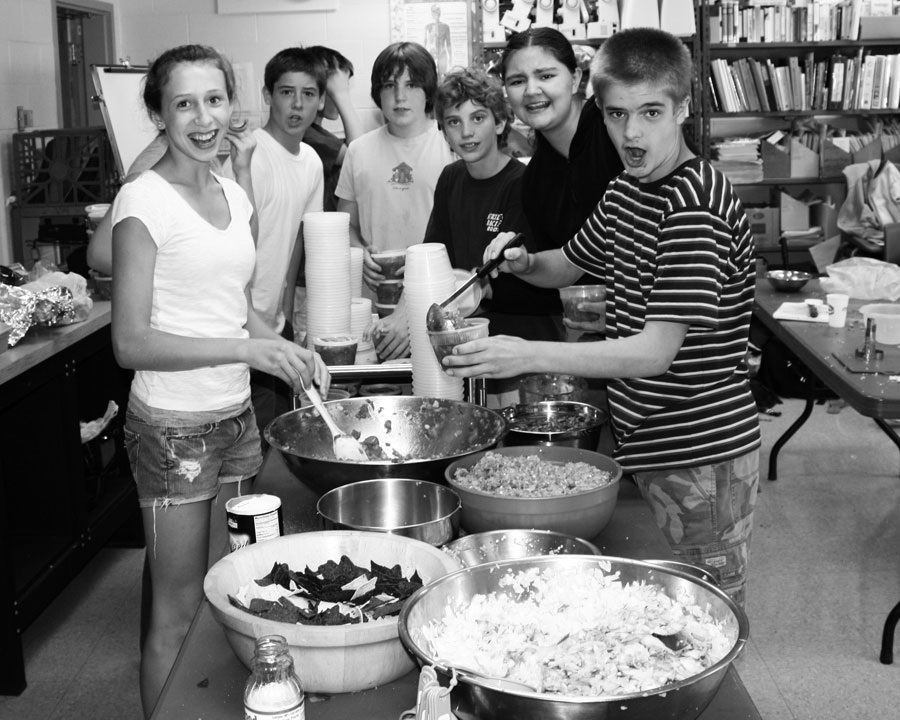
I ran across a few other FTS coordinators in our region and around Vermont at a forum for other grant recipients. We soon realized that we were all facing similar challenges, and could benefit from ongoing communication and support. Looking for a way to scale-up my new found passion, and drawing on my past experiences in community organizing, consulting and project management, I launched the Upper Valley Farm to School Network (www.uvfts.org) in 2008. The Upper Valley region includes about 70 communities along the Connecticut River, half in Vermont and the remainder in New Hampshire. While Vermont has been a national FTS leader, New Hampshire efforts have lagged for a variety of cultural and political reasons. Part of the mission of UVFTS is to help spread the farm to school lessons to our neighbors across the river.
I was able to get some seed funding from a local health foundation, and started looking for parents, administrators, teachers, food service staff and parents in surrounding communities that were interested in advancing farm to school programs in their school communities. I met with people in the schools to identify their interests, and also take time to recognize current efforts and assets at the schools around which a farm to school program could be built.
Some schools already had gardens, and one had an indoor greenhouse (that was used to store books). Others had teachers, parents or other staff that were very interested in farming or had farming backgrounds. Some schools took regular farm field trips or conducted class activities related to food and farm themes. And there were a number of cafeteria staff who already bought some local corn, or potatoes or greens in season from local farmers – often unbeknown to the staff and kids who ate them. The goal was to celebrate and promote what was already working and build on that base to take the next step.
Given my lack of knowledge of farming, teaching and the complex world of school food service, it was imperative to create forums where peers in these professions could meet, share information and support each other. The UVFTS does this through regular workshops and other forums on topics of interest to teachers, FTS leaders and food service, an email newsletter and website that highlight successes in member schools, and opportunities and resources that we want to know about.
As we enter our fourth school year, we are excited about the growing number of schools with FTS programs, farms interested in selling food to schools and helping demonstrate farming work and life to students, teachers open to integrating food and farm themes into their classrooms – because they see the connection with local food and farms as a means of moving our kids forward and not so worried about keeping them from being left behind.




